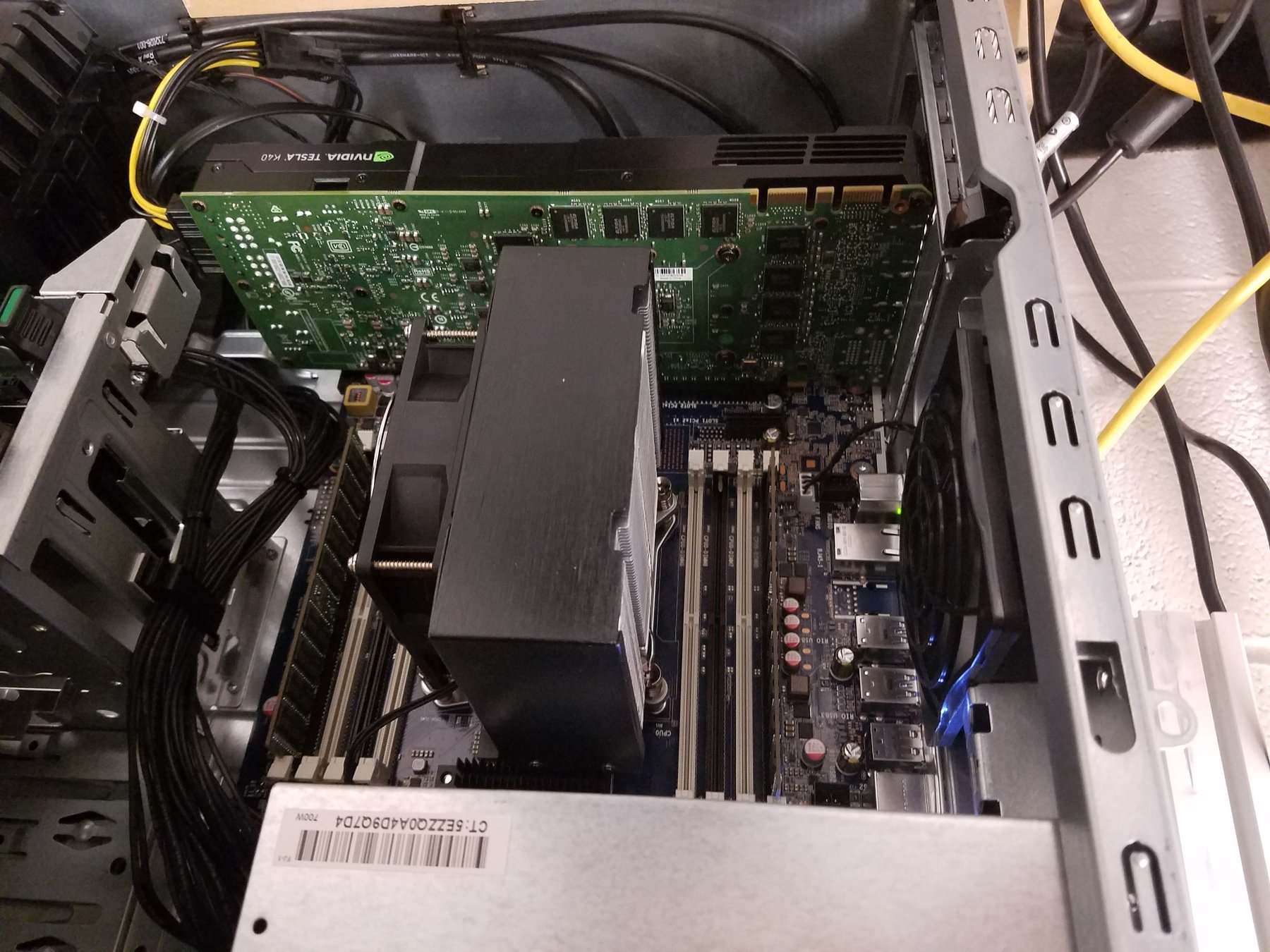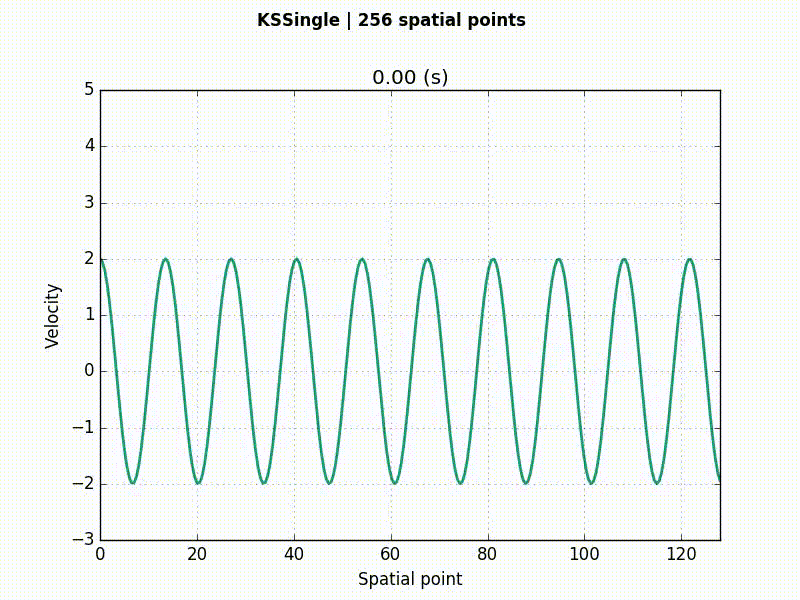An initial investigation of the performance of GPU-based swept time-space decomposition
Daniel Magee
Kyle E. Niemeyer
School of Mechanical, Industrial, & Manufacturing Engineering
Oregon State University
January 11 - AIAA SciTech 2017 - Grapevine, TX

Why ?



Why GPU?

Heterogeneous clusters are becoming more common
GPGPUs offer significant parallelism in a workstation

Heat Equation
Important aspects:
- First order in time
- Three-point stencil
- Insulated boundary conditions
Test cases
Kuramoto–Sivashinsky (KS) equation
Important aspects:
- Second order in time (RK2)
- Five-point stencil
- Periodic boundary conditions.
Overview
- The swept rule as a response to barriers in parallel programming.
- GPU architecture
- Swept schemes on GPU
- Performance results
- Swept Rule introduced by Alhubail and Wang
"The swept rule for breaking the latency barrier in time advancing PDEs", Journal of Computational Physics, 2015
The problem:
t
x
How to effectively decompose the space-time domain for parallel processing?
"Shared" memory systems

t
x
Distributed memory systems
t
x


Ghost Region
| Latency | Bandwidth | |
|---|---|---|
| Analogy | Fixed cost | Variable cost |
| Best Case | 700 ns | ~ .1 ns per double |
The cost of distributed communication
Node
0
Node
1
"The swept rule for breaking the latency barrier in time advancing PDEs", Journal of Computational Physics, 2015
Do as much work as possible on the data in the fastest memory before writing to the slowest memory.
t
x
General Principle
A very brief introduction to the GPU
Block
Streaming Multiprocessor (SM)
Warp
Thread
Physical
Abstract
32 threads
Memory hierarchy
Global
Shared
Register
All threads
Block
Warp
Accessible to
Lifetime
Application
Kernel
Kernel
Slowest
Fastest
Heat example
Advance n (node length) timesteps with 2 communications
Swept Rule Procedure


Triangle storage dilemma

To save every point requires:
If n=256 at double precision
t
x
t
x
Data folding solution
Now a triangle with base 256 can be stored in two rows of 256.
Extended stencil & second order

- Higher order derivatives require larger stencils in time or space
- Fourth derivative requires either a five-point stencil or an intermediate flux computation
This value is required for
this calculation
KS example
Solution


Extend stencil in space not time.
Flatter triangle with no intermediate spatial steps is able to be folded as in previous example.
SharedGPU:
- Used for Heat and KS
- Node -> Block
- Shared memory working array
Organizing the Swept Rule
Hybrid:
- Heat only
- Passes split node to CPU
Register:
- KS only
- Node -> Warp
- Registers for working array

A note on "Classic" version
__global__ void classicKS(const REAL *ks_in, REAL *ks_out, bool finally)
{
int gid = blockDim.x * blockIdx.x + threadIdx.x; //Global Thread ID
int lastidx = ((blockDim.x*gridDim.x)-1);
int gidz[5];
#pragma unroll
//indices of previous values
for (int k=-2; k<3; k++) gidz[k+2] = (gid+k) & lastidx;
if (finally)
{
ks_out[gid] += finalStep(ks_in, gidz);
}
else
{
ks_out[gid] = predictorStep(ks_in, gidz);
}
}-
Problem sizes 2048–1,048,576 by powers of 2
-
Block sizes 32–1024 by powers of 2
-
Double precision
-
Results are the best block size for each scenario.
Testing:
Results
GPU: Nvidia Tesla K40c
745 MHz | 15 SM
CPU: Intel Xeon 2630-E5
2.4 GHz | 8 cores | 16 threads
Equipment:


Heat


K–S
Parallel CPU with MPI vs GPU


K–S equation
"The swept rule for breaking the latency barrier in time advancing PDEs", Journal of Computational Physics, 2015
MPI program from Alhubail and Wang:
Conclusions
- The swept rule improves on the classic finite difference decomposition by 6x for smaller problem sizes and 2x for larger problem sizes for both test cases.
- Using only the GPU and storing the working array in shared memory was the most effective swept rule version.
- Parallel finite difference codes on workstations can be sped up by several orders of magnitude using even naive GPU kernels.
Future work
- Applying this work to heterogeneous cluster architecture using CUDA aware MPI.
- Explore the effect of block-size on performance.
- Extend to 2-D.
Acknowledgements




Questions?

code available at
github.com/Niemeyer-Research-Group/1DsweptCUDA
SciTech Prez
By mageed
SciTech Prez
Presentation for AIAA SciTech conference January 2017 in Grapevine, Texas.
- 1,641
